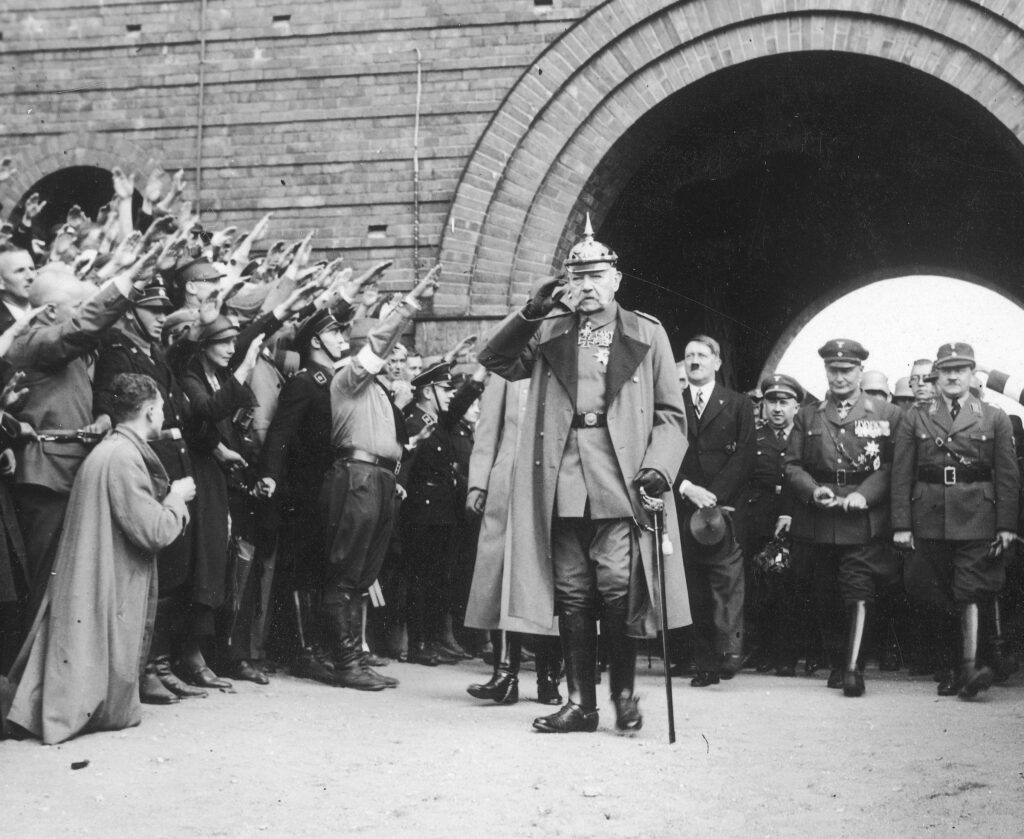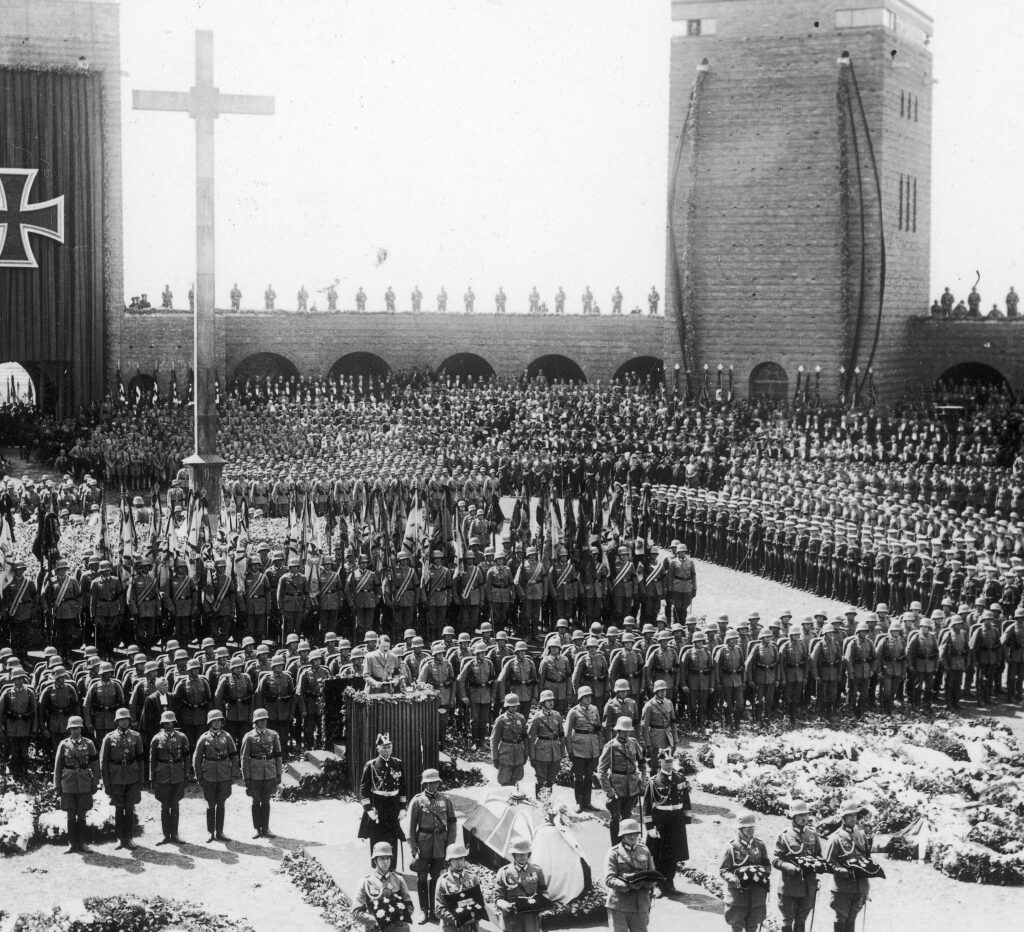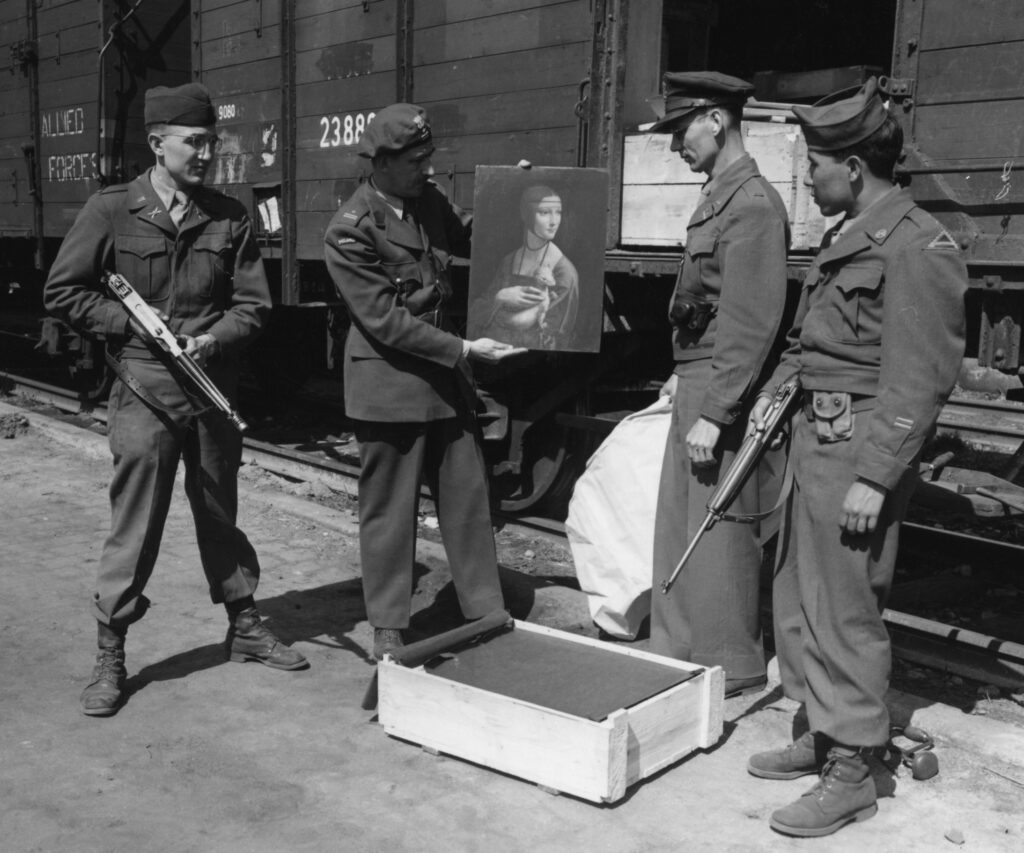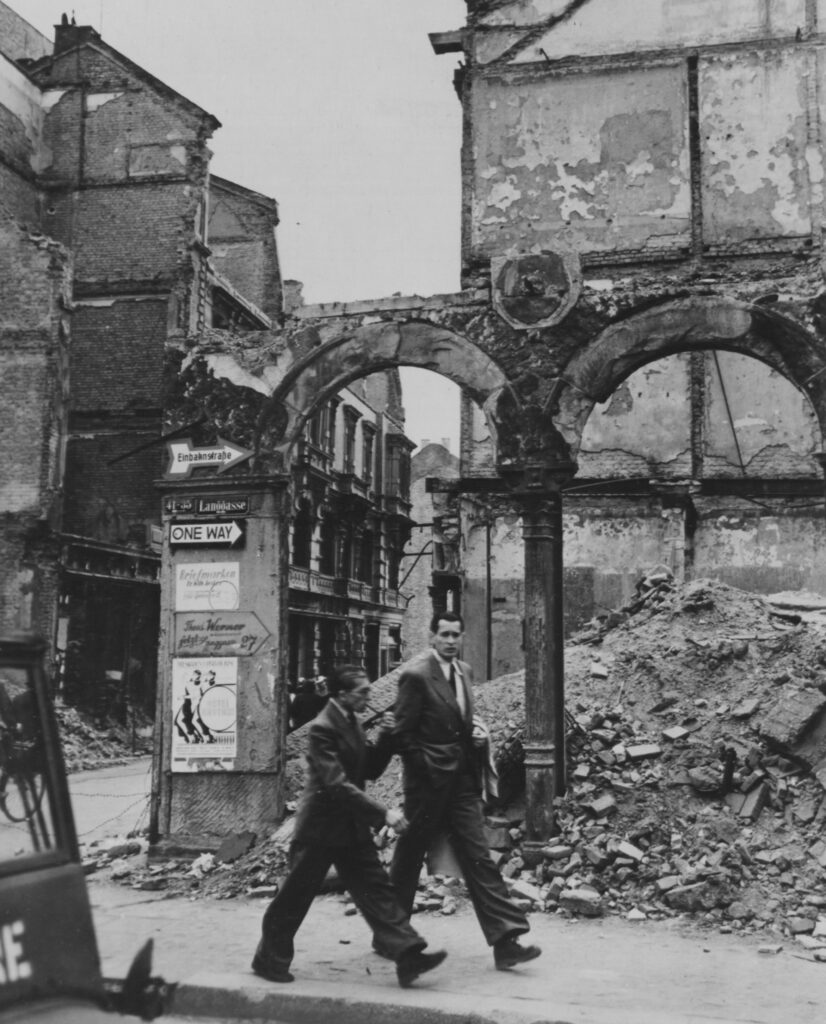As Germany crumbled in hearth and rubble within the last months of World Battle II, Adolf Hitler issued orders for 4 well-known Germans to be held hostage—not dwelling Germans, however lifeless ones. All of them had died earlier than the battle had even began; two, the truth is, had died within the 1700s.
The unlikely quartet of corpses consisted of two Prussian warrior kings—Frederick William I and Frederick the Nice—plus the late German Weimar Republic President Paul von Hindenburg and his unassuming spouse Gertrud. The our bodies can be hauled cross nation, transported by sea, dragged up mountains, carted by forests and finally entrenched in darkness, the place bewildered American troopers by accident stumbled upon them in April 1945.
But the story of the kidnapped corpses didn’t finish there. The U.S. Military would quickly uncover that the lifeless might be simply as troublesome because the dwelling.
Kidnapping Hindenburg
In view of Germany’s catastrophic navy state of affairs, most reasonable individuals wouldn’t have seen a lot level within the Third Reich’s deal with well-known corpses. But Nazi officers positioned uncanny emphasis on the lifeless. Deaths, funerals and memorial occasions had been used for propaganda from the earliest days of the Nazi regime. The Nazis confirmed a complete lack of respect for lifeless people in addition to a perverse curiosity in human stays. Our bodies of well-known historic figures had been often dug up, analyzed, poked at, made into centerpieces for speeches and heaped with swastika wreaths. One of many chief tomb violators was Reichsführer-SS Heinrich Himmler, whose minions turned professional grave robbers in pursuit of well-known bones and artifacts. Hitler and Goebbels turned masters of funeral ceremonies, creating spectacles for lifeless compatriots that had been much less memorial companies than political rallies.
Two well-known Germans handled to funerary theatrics had been the Hindenburgs. Mustachioed Prussian Area Marshal Paul von Hindenburg went down in historical past because the lackluster second President of the Weimar Republic who appointed Hitler as Germany’s Chancellor and opened the door to one of many darkest chapters in world historical past. Little might he have identified that the “Bohemian corporal” he infamously shook palms with would sometime uproot his stays—and people of his late spouse, Gertrud, who lay buried on the household property.

(Polish State Archive)
When Hindenburg died, Hitler determined that the previous man wanted to exit in fashion—ideally with a increase of propaganda to impress the dwelling. Subsequently the deceased Area Marshal—together with Frau Hindenburg, unceremoniously dug as much as come alongside for the experience—was hauled to the Tannenberg Memorial, a gargantuan stone temple within the plains of East Prussia partially designed to commemorate a 1914 battle and principally designed to make Germans overlook that the Teutonic knights had misplaced the primary Battle of Tannenberg centuries earlier in 1410.
The memorial sported a minimum of eight towers and sufficient house within the center for a big crowd and doubtless a number of orchestras. In 1934, throughout an extended and elaborate ceremony during which the memorial brimmed with wreaths and glittering uniforms sufficient to make one’s eyes water, the Hindenburg couple had been buried of their very personal tower. It was full with a statue of Hindenburg himself, who had expressly wished to be buried along with his spouse at residence. For the pair to finish up entombed within the wilderness of East Prussia was much like being buried at a frontier outpost like Fort Apache.

(Polish State Archive)
The Hindenburgs weren’t the one dignitaries whose final needs can be ignored. Destined to accompany them in a posthumous journey had been two well-known kings of Prussia’s Hohenzollern dynasty—Frederick William I and his son Frederick II, referred to as Frederick the Nice. Each kings had attained fame for extraordinary navy achievements. Neither king had supposed to maintain touring after loss of life. Frederick the Nice left directions in 1769: “Bury me in Sans Souci [Potsdam]…in a tomb which I’ve had ready for myself…” But the 2 royals weren’t destined to relaxation in peace.
A Salt Mine…and Pink Crayon
Because the Allies closed in throughout Germany in 1945, all 4 our bodies ended up taking a wild experience to keep away from being captured by combatants in a battle that they had taken no half in throughout their lifetimes. On Hitler’s orders, each Hindenburgs had been pried out of the tower on the Tannenberg Memorial and shoved onto a ship; it was assumed that the Russians wouldn’t react properly upon discovering the memorial and realizing the fiercely anti-Russian Area Marshal was stuffed into its partitions.
The cruiser Emden hauled the Hindenburg coffins to Berlin, the place they had been joined by the coffins of the royal Fredericks Senior and Junior. From there, the coffins had been packed off cross-country to the rugged mountainous area of Thuringia, the place they had been supposed to stay hidden underground till the time was applicable for an underground Nazi resistance motion to convey them to the floor.

(Nationwide Archives)
On April 27, 1945, males of the U.S. Military Ordnance Corps shuffled wearily by the formidable Thuringian Forest and set to work clearing out a wickedly deep salt mine close to the city of Bernterode. Navigating a community of tunnels stretching on for about 14 miles, they got here throughout not solely hidden ammunition reserves however a passageway sealed with rubble. Digging by six ft of particles, they discovered a secret chamber containing tapestries and helpful work. In addition they found 4 big coffins staring again at them.
The troopers had been baffled. Fortunately the Germans had seen match to label the coffins by writing the names of the lifeless on them in pink crayon.
A Delicate Drawback
Transferring the coffins proved a hellish job. European dignitaries had been typically buried in sarcophagi cast of metallic alloys. This course of would seal the physique in an hermetic vacuum and stop fast decomposition, as a substitute prompting a means of pure mummification. Such sarcophagi weren’t supposed to be cell—the truth is they had been, fairly fairly, constructed to remain in a single place. It took the People an hour to get Frederick the Nice’s casket, which weighed a minimum of 1,200 kilos, into an elevator for removing.

(Nationwide Archives)
The U.S. Military trucked the our bodies to a citadel at Marburg, the place the lifeless dignitaries had been saved underneath guard in a cellar and stared at by cautious troopers for a 12 months till the U.S. State Division, who labeled the corpses as “political personages,” arrived at a choice about what to do with them. Lt. Gen. Lucius Clay, deputy U.S. governor in occupied Germany, was instructed to bury the lifeless in a dignified method and delegated the duty to Monuments, Effective Arts and Archives Part Unit (MFAA), also referred to as the Monuments Males.
It turned out to be what the Monuments Males thought-about one in every of their strangest duties. They discovered that entombing the lifeless German dignitaries was nearly as sophisticated as making an attempt to make resort preparations for them. To bury these characters required navigating European historical past, worldwide diplomacy and the desires of subsequent of kin—who had been awkward political personages themselves.
No Room For Useless Militarists
The primary model of the plan entailed that the People would take the 2 King Fredericks and their British cousins would relieve them of the Hindenburgs. Somewhat little bit of analysis can be required to resolve applicable areas—which might not turn into rally spots for any stray Nazis. After the logistics had been settled, native German authorities had been purported to do the precise burying. The burials needed to be saved secret.
Issues went downhill shortly. The British had been shocked to study of the corpse drawback and had been “fairly distressed” by the concept of getting to placed on a funeral for the infamously warlike Paul von Hindenburg, in response to a 1950 article in Life journal. After consultations in London, the British made it clear that Mr. and Mrs. von Hindenburg weren’t welcome to even set one skeletal foot of their zone, a lot much less be buried in it. The U.S. Military scouted round for appropriate previous household castles to bury the 2 Prussian King Fredericks however inevitably discovered the properties within the possession of the French. The French, understandably, had no want to do any favors for the 2 Hohenzollern kings.

(Nationwide Archives)
Fourteen months later, the hapless People had been nonetheless the unwilling guardians of 4 well-known lifeless Germans and hoped to bury them like every other lifeless individuals. Debates had been held about whether or not to bury the lot collectively or separate them. Many church buildings had been bombed so accessible actual property for personal funeral companies was scarce. Castles bustled with billeted troops and jazz orchestras.
The People finally agreed to not cut up the lot however as a substitute to bury the bunch collectively in St. Elizabeth’s church in Marburg, an historical native church down the street from the place the our bodies had been already being saved in a cellar. Earlier than the burials occurred, the Monuments Males determined to share the information with dwelling family and ask for his or her approval as a sort gesture.
A Marriage ceremony or a Funeral?
The People had no bother contacting the son of the Hindenburg couple, Maj. Gen. Oskar von Hindenburg, however issues received sophisticated when the proud Prussian signed his navy title on a resort registry and, to his nice indignation, was promptly arrested. The Monuments Males secured his launch. Unsurprisingly, he was totally supportive of his mother and father being given a traditional funeral after the posthumous misadventures that they had endured.
Issues received off to a clumsy begin with Crown Prince Wilhelm, the son of Kaiser Wilhelm II who had turn into notorious throughout the First World Battle. The Crown Prince, then age 64, was the pinnacle of the Hohenzollern household and thus the closest relative of the 2 King Fredericks. He discovered himself within the French zone, the place the French guarded him peevishly and wouldn’t let him go away their sight. To clear the matter up whereas sustaining official secrecy, the Monuments Males despatched the prince a message telling him that an American officer would come go to to debate an necessary household matter, accompanied by the prince’s youngest daughter, Cecilia.
The Crown Prince assumed that the non-public household matter was one thing quite intimate when he noticed Cecilia seem with U.S. Military Capt. Everett Parker Lesley Jr., referred to as Invoice, of the Monuments Males. When Lesley broached the subject of holding the ceremony in a church, the suspicious father refused to provide his permission.
“We’re appearing underneath orders from the Secretary of Battle!” rejoined Lesley. “What on earth has the Secretary of Battle to do with you marrying Cecilia?” demanded the prince. Lesley, astounded, defined he wasn’t there for marriage however for a funeral. The strict prince was overcome by laughter.
The Final Cease
After some issues digging within the church to clear room for the coffins, and a few wandering tomb lids that just about received shipped to the Russian zone, the top-secret funerals had been able to occur. The Monuments Males anticipated all of it to go quietly with no person the wiser. Relations would attend however no person else was purported to know. Nonetheless, on the day of the non-public burial ceremony, the People had been mildly horrified to search out about 500 Germans gathered across the church to look at.
The unlikely quartet of German dignitaries had been buried collectively in Marburg, the place they remained unobtrusively till the Hohenzollern household plucked their two King Fredericks out in 1952 and hustled them right into a household citadel. In August 1991, the 2 kings’ our bodies had been carted out once more—this time they got here full circle, returning to the start line of their journey at their authentic resting place in Potsdam. Their (hopefully) last reburial occurred with a lavish televised ceremony following German Reunification.
The Hindenburgs stay in Marburg in a dignified however inconspicuous place, because the Monuments Males supposed. Locals discover the presence of Paul von Hindenburg slightly bit awkward—even when the church pastor has expressed sympathy for the deceased’s missed spouse.
However, like them or not, no person can consider a greater answer than the People did in 1946. Native mayor Thomas Spies instructed Hessenschau information: “From town’s viewpoint, there isn’t a motive why Hindenburg ought to relaxation right here, however in fact the person needs to be buried someplace.”
